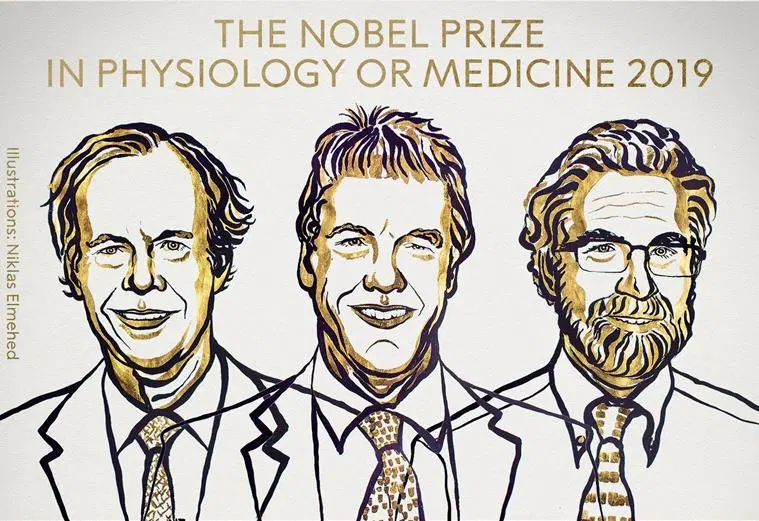 This year’s Nobel Prize in Physiology/Medicine has been awarded to three physician-scientists for their discoveries on ‘how cells sense and adapt to oxygen and availability’. The award was shared by William Kaelin Jr at the Dana-Farber Cancer Institute and Harvard University in Massachusetts, Sir Peter Ratcliffe at Oxford University and the Francis Crick Institute in London, and Gregg Semenza at Johns Hopkins University in Baltimore, Maryland.
This year’s Nobel Prize in Physiology/Medicine has been awarded to three physician-scientists for their discoveries on ‘how cells sense and adapt to oxygen and availability’. The award was shared by William Kaelin Jr at the Dana-Farber Cancer Institute and Harvard University in Massachusetts, Sir Peter Ratcliffe at Oxford University and the Francis Crick Institute in London, and Gregg Semenza at Johns Hopkins University in Baltimore, Maryland.
The Nobel committee described the discovery as “one of life’s most essential adaptive processes,” answering profound questions about how the body works and providing potential new therapeutic avenues to treat cancer and other diseases. The three scientists, working independently, revealed the cascade of molecular events that allow cells to detect and respond to different levels of oxygen. That allows the human body to adapt to the thinner air at high altitude by generating more red blood cells to carry oxygen. But it can also go awry in disease, providing new targets for treatment: Cancer cells exploit these molecular switches to thrive, for example, and increasing cells’ tolerance for low oxygen could offer a way to treat heart attacks and strokes.
Throughout the 1990s and 2000s, Kaelin, Ratcliffe, and Semenza worked separately to decode the actions of an oxygen-sensitive protein called HIF, for a hypoxia-inducible factor. They teased apart the network of molecules that direct the proteasome, the cell’s garbage disposal, to destroy HIF in high-oxygen conditions. When oxygen levels drop, the same system causes HIF to rise, cranking up the production of a hormone that in turn triggers the production of red blood cells and blood vessels.
A drug that hacks the molecular pathways identified by the winners has already been approved in China for treating anaemia, by amping up the body’s red blood cell activity. Other drugs that rely on their work are also in development for the treatment of certain cancers. Tumours often have low oxygen levels, and some cancers have developed ways of overriding the HIF system to attract blood vessels to support their rapid growth.
They will each get an equal share of the $918,000 cash award.
Source: WIRED, Times Now, The Washington Post, The Guardian.